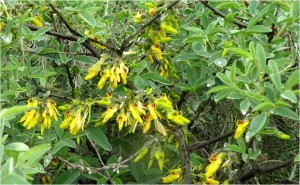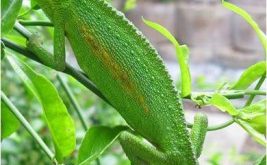
Name: Mediterranean Stinkbush
Scientific name: Anagyris foetida L
Family: Legouminosae
Description
Common deciduous fragrant shrub up to 4m tall. Leaves compound consisting of three leaflets that have a foul odor when crushed. Libra flowers are yellow-green with the upper petal having a characteristic dark brown color. Hard and poisonous seeds. Flowering December – April.
Spread – Toxicity
Shrub found on limestone slopes and fields up to 1200m. It tolerates areas of intense grazing because animals usually avoid it due to the bad smell, while bees often visit its flowers. It is a plant of the Mediterranean zone but extends east to Iran.
All parts of the plant are toxic, especially the sperm, because they contain the alkaloid anagrin, which is a teratogenic substance. Consumption of herbivores causes gastrointestinal disorders, miscarriages and deformed newborns. Consumption of about 20 seeds can also cause death in children.
Sources:
[1] «Αγριολούλουδα και άλλα φυτά της Κυπριακής γης» Τμήμα δασών
[2] «Δηλητηριώδη – Τοξικά φυτά στην Κύπρο»- Λουκάς Σαββίδης 2005
[3] http://floraofsyros.blogspot.com/2012/08
Image source:
Σάββας Τρύφωνος : trystell@cytanet.com.cy

 Κυπριακό Κέντρο Περιβαλλοντικής Έρευνας & Εκπαίδευσης – Κυκπεε
Κυπριακό Κέντρο Περιβαλλοντικής Έρευνας & Εκπαίδευσης – Κυκπεε



